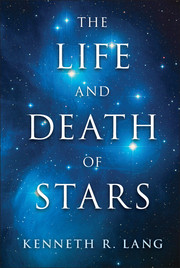Book contents
- Frontmatter
- Contents
- List of Focus Elements
- List of Tables
- Preface
- 1 Light of the Sun
- 2 Gravity and Motion
- 3 Atomic and Subatomic Particles
- 4 Transmutation of the Elements
- 5 What Makes the Sun Shine?
- 6 The Extended Solar Atmosphere
- 7 Comparisons of the Sun with Other Stars
- 8 The Lives of Stars
- 9 The Material Between the Stars
- 10 New Stars Arise from the Darkness
- 11 Stellar End States
- 12 A Larger, Expanding Universe
- 13 Birth, Life, and Death of the Universe
- Quotation References
- Author Index
- Subject Index
- Plate section
4 - Transmutation of the Elements
Published online by Cambridge University Press: 05 February 2013
- Frontmatter
- Contents
- List of Focus Elements
- List of Tables
- Preface
- 1 Light of the Sun
- 2 Gravity and Motion
- 3 Atomic and Subatomic Particles
- 4 Transmutation of the Elements
- 5 What Makes the Sun Shine?
- 6 The Extended Solar Atmosphere
- 7 Comparisons of the Sun with Other Stars
- 8 The Lives of Stars
- 9 The Material Between the Stars
- 10 New Stars Arise from the Darkness
- 11 Stellar End States
- 12 A Larger, Expanding Universe
- 13 Birth, Life, and Death of the Universe
- Quotation References
- Author Index
- Subject Index
- Plate section
Summary
Things That Glow in the Dark
Near the end of the nineteenth century, university scientists in England, Germany, and France were actively investigating the light produced when electricity is passed through a glass tube or when certain substances shine after being exposed to sunlight. It must have been fascinating to study such things that can glow in the dark, at about the same time that the first long-lasting, practical electric light bulb was invented – by the American Thomas Alva Edison. In England and Europe, experiments with glowing tubes and shining materials led to discoveries of the electron, x-rays, and radioactivity.
When voltage was applied across the ends of a glass tube filled with rarefied gas, it emitted light, much like neon signs now used for advertising. An arc of light passed from the cathode (the negative end) of the gas tube to the other end (the positive anode) so rays passing through the gas were apparently producing the light. When vacuum pumps were used to reduce the gas pressure in the glass tubes, they ceased to glow inside, but the glass would shine where the invisible cathode rays apparently were striking it.
The French scientist Jean Perrin used a magnet to deflect the location of the glowing spot on the glass, suggesting that the unseen streams of “rays” were beams of negatively charged particles. A magnetic field deflects a negative charge in one direction and a positive charge in the other direction, and the size of the deflection depends on the mass of the charged particle, its velocity, and the strength of the magnetic field. The British physicist Joseph John Thomson subsequently used both electric and magnetic fields to measure the deflection of the beams of charged particles, now called electrons.
- Type
- Chapter
- Information
- The Life and Death of Stars , pp. 58 - 75Publisher: Cambridge University PressPrint publication year: 2013



